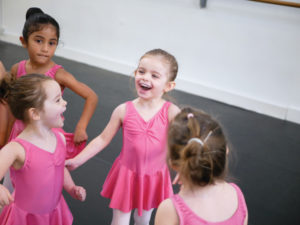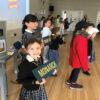by Tabitha McConnell
Dance Art Studio
Many children dream of becoming a ballerina, wearing the tutu and being right up on their toes. But there is so much more to the ballet curriculum than this. While these aspirations give children something to work towards, dance also provides achievable goals that can be met across a single lesson or across a term, teaching children self-motivation.
So why take your child to dance class when you can just put some music on at home? With the guidance of a qualified teacher, your child is not just learning dance but a variety of cross-curricular skills. Ballet, for example, teaches another language – French. Other subjects covered through the dance curricular include: history, religious studies, music and drama. Our modern-day society and multiple other subjects can be expressed through dance, giving children the opportunity to create their own movements and sequences, also known as choreographing.
There are many long-term benefits of continuing dance; your child is learning discipline through a structured environment, from a different mentor. Student’s uniforms must be smart, they must listen in class and be in time with the music. At competitions, points are deducted if the performer is seen to look untidy or messy in appearance. This teaches students the importance of
good appearance, therefore making them more employable in the future. Many studies
have suggested that a tidy appearance leads to a tidier mind and work ethic.
Encouraging your child to begin dance at a young age will increase their chances of staying physically active throughout life, therefore improving their overall health. Dance develops essential motor patterns that are a key part of many sports.
A shocking 80% of four year olds are showing a significant delay in their motor development. Through dance children gain the vital motor skills needed for everyday life. Simple skills like balancing, jumping and the transference of weight are learnt. These skills assist with everyday life with movements such as reaching for something on the top shelf and increase flexibility. Dance is also a suitable complementary activity to many other sports such as netball, as it assists with footwork, or javelin as it assists with balance. Dance skills are particularly beneficial when playing football, as they increases children’s mobility and therefore angles at which they can kick the ball. Dance is for both girls and boys, with many schemes in place to encourage boys to dance. Starting boys dancing at a young age is teaching all children that stereotypes can be defied and that they should do what they really enjoy.
Is dance really physically challenging my child? You may perceive ballet as a softer dance form and ask if it really challenges a child’s physique. Dance can be classified as vigorous exercise as student’s heart rates are elevated by more than 60% for over half of the lesson. This does not mean dance isn’t suitable for those looking for a more relaxing, less strenuous exercise form; with so many genres available under the dance bracket there is something for all. Dance is so versatile and inclusive that it caters for all capabilities. Ballet has also been shown to increase lung capacity and efficiency with only two hourly sessions a week. Dance is one of few sports to work nearly all the muscle groups counteracting the effects of repetitive strain injuries. Core strength is also developed, which permits good posture and facilitates ease of breathing.
Not only does dance positively influence a child’s physical development but also their cognitive development as they are learning both time-management and self-discipline. These skills are transferable to other parts of life, such as school work. Dance students are also asked to learn and recall patterns of movement, further challenging both their memories and mental capabilities. This challenge has been shown to reduce the effects of many cognitive diseases at an older age. Let’s not forget, dance classes are also where children make friends for life as they develop team skills through group work in a friendly environment.
 Ballet offers so much more than just pointed toes; it offers children the opportunity to express themselves freely, whether that be using their butterfly wings to fly away, or joining the marching band and playing their favourite instrument. This is something very few other physical activity schemes offer. This creativity is so important to a child as it enables them to explore their inner selves in addition to the physical world, creating emotional experiences and memories that will remain with them for life. I would highly advise all children are given the opportunity to dance, whether this be something they wish to pursue as a career, perform as a hobby or just use as a regular class for fitness purposes. The positive effects on their social, cognitive and physical development are numerous.
Ballet offers so much more than just pointed toes; it offers children the opportunity to express themselves freely, whether that be using their butterfly wings to fly away, or joining the marching band and playing their favourite instrument. This is something very few other physical activity schemes offer. This creativity is so important to a child as it enables them to explore their inner selves in addition to the physical world, creating emotional experiences and memories that will remain with them for life. I would highly advise all children are given the opportunity to dance, whether this be something they wish to pursue as a career, perform as a hobby or just use as a regular class for fitness purposes. The positive effects on their social, cognitive and physical development are numerous.
Dance Art Studio is located in the Fiveways and Preston Park area of Brighton offering under 5s and graded ballet, tap and modern. Boys tap and jazz, teen jazz, adult tap and jazzfit.
We also hold summer workshops.
www.danceartstudio.co.uk










